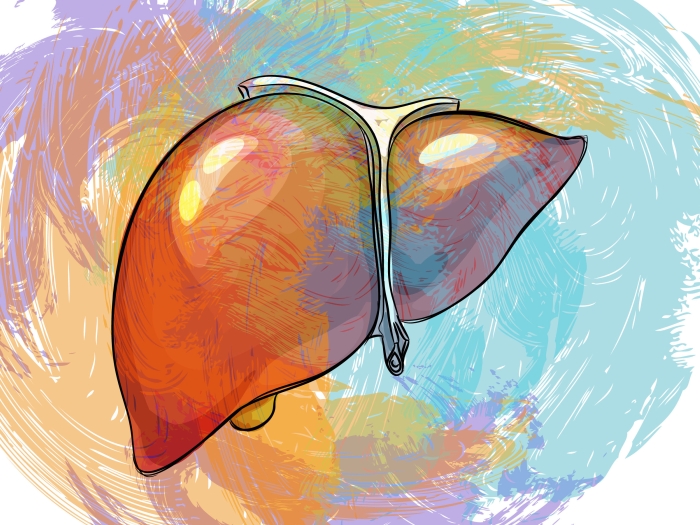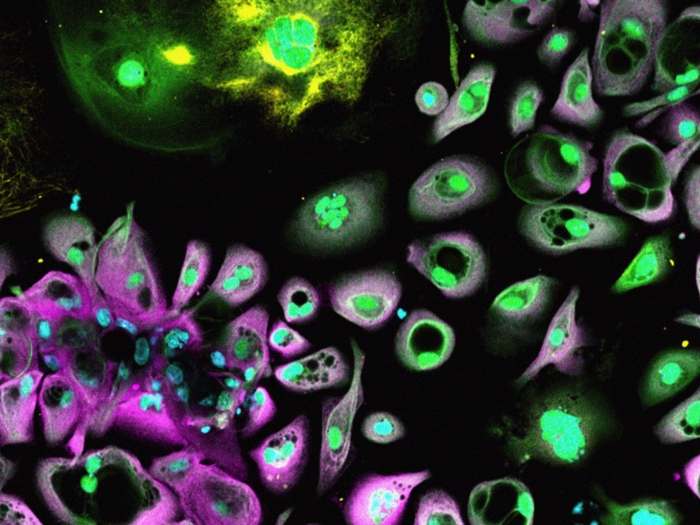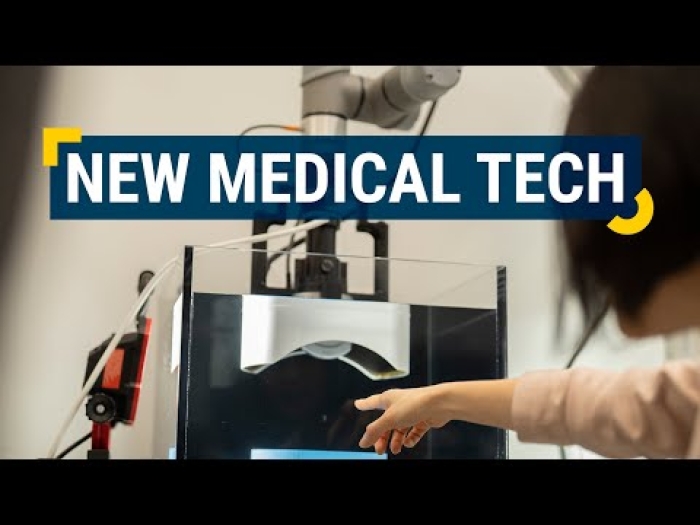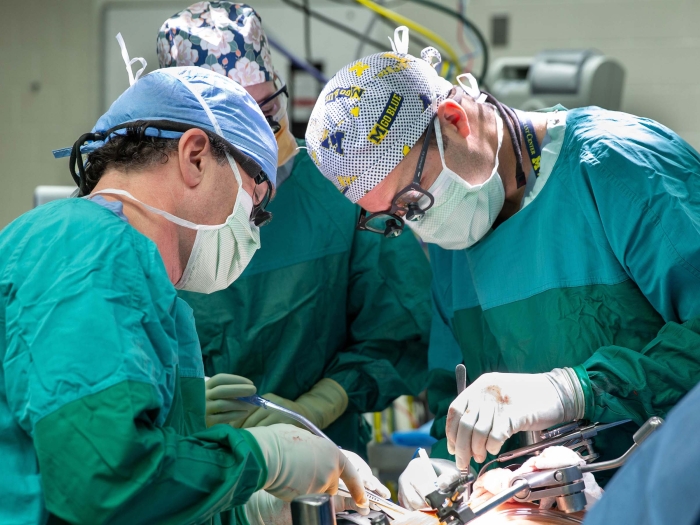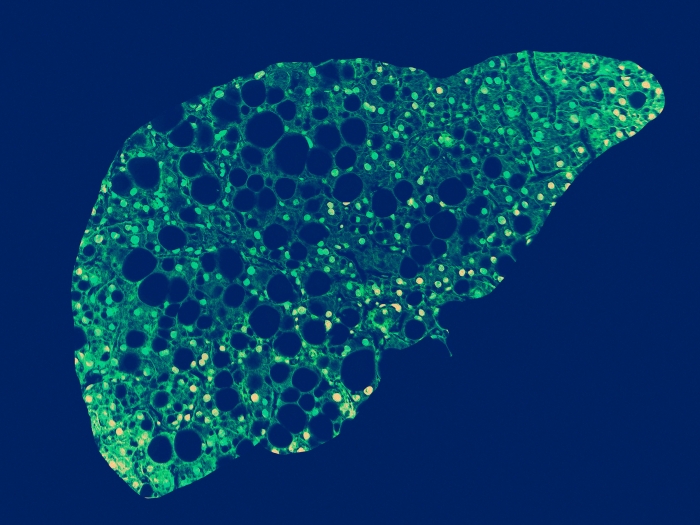A collaborative U-M team shows that liver injury is less likely to originate from popular cancer immunotherapy drug, pembrolizumab, than tumor progression.
10:30 AM
Author |

Immunotherapy as a treatment for advanced solid organ tumors has rapidly evolved over the past decade, often yielding remarkable results. However, its use has also given way to new adverse effects, including drug-induced gastrointestinal and liver toxicities.
"Checkpoint inhibitors are a game changer for a lot of oncology patients with previously untreatable tumors," says Robert Fontana, M.D., University of Michigan's medical director of liver transplantation. "However we are now beginning to see a variety of immune-mediated side effects, including liver toxicity, which many practitioners don't know how to diagnose or treat."
This is why Fontana decided to lead one of the largest case studies on pembrolizumab, an antibody used in cancer checkpoint immunotherapy, and the onset of liver injury in oncology patients.
"Our study's goal was to determine not only the incidence of liver injury associated with pembrolizumab therapy, but also the cause and outcomes of patients of liver injury," says Fontana.
His collaborative team was comprised of faculty members from U-M's departments of internal medicine, hematology and oncology, and gastroenterology and hepatology. Their work was recently featured in Alimentary Pharmacology & Therapeutics.
Checkpoint inhibitors are a game changer for a lot of oncology patients with previously untreatable tumors, but many practitioners don't know how to diagnose or treat their side effects.Robert Fontana, M.D.
Study outline
In this study, liver injury was defined by exceeding the upper limit of normal levels of serum aspartate aminotransferase (AST), alanine aminotransferase (ALT), alkaline phosphatase (ALP) and total bilirubin for an adult. Traditionally, the rise of these biomarkers can be caused by hepatitis, cirrhosis, liver cancer and other conditions.
During a four-year period, a total of 491 patients who were receiving pembrolizumab immunotherapy were identified from the Michigan Medicine Cancer Registry database.
Through Data Direct, a self-service electronic medical record (EMR) search tool, patient health data was extracted, including information like birthdates, sex, race, ethnicity, body mass index and the dose and frequency of pembrolizumab infusions administered.
In addition, AST, ALT, ALP and total bilirubin levels were measured prior to, during and after immunotherapy.
"Manual EMR review was used to record additional data, including prior treatment with other immunotherapies or liver‐directed therapies, existing tumor types, pre‐treatment liver imaging occurrences, liver biopsy reports and the use of steroids," says Fontana.
Patient outcomes
Seventy of the 491 (14.2%) pembrolizumab‐treated patients developed liver damage at an average of 62 days and 71.4% had a cholestatic injury profile at onset. This means that there was a marked decrease in bile flow due to impaired secretion by hepatocytes.
"The overall incidence of liver injury we observed in this large, real-world cohort is comparable to what was previously reported in clinical trials," says Fontana. "However, the predominance of cholestatic liver injury at presentation made us wonder if this really was drug toxicity versus an alternative cause."
The median age, gender and tumor types of the liver injury patients were similar to those without. However hepatic metastases, or malignant tumors in the liver that have spread from other organs affected by cancer, were more commonly observed in liver injury patients.
During follow-up, liver injury patients were less likely to experience tumor remission and had higher mortality rates. Only 20 liver injury cases were deemed as probable drug-induced hepatotoxicity and these patients were significantly more likely to present with a hepatocellular or mixed injury pattern, receive corticosteroids and experience lower mortality rates during follow‐up.
The poorer outcomes in the liver injury group may be related to the larger proportion of patients with hepatic metastases and other recent treatments prior to pembrolizumab, which are consistent with treating more advanced and refractory forms of cancer.
Upon further analysis, the team discovered that pre‐treatment hepatic metastases were the only independent baseline factor associated with the development of liver injury. They also found that only a minority of the liver injury cases were attributed to pembrolizumab hepatotoxicity, while liver cancer accounted for most of the other patients with benign or malignant biliary obstruction.
"By using validated causality assessment methods, we were able to show that less than a third of the liver injury cases were attributed to immunotherapy itself, and the remainder were attributed to tumor progression within the liver," says Fontana.
Informing care
Fontana and his team's data suggest that a thorough evaluation of the cause of liver injury through serological testing and contrast-enhanced imaging of the liver are important when informing proper patient care. This is very different than the traditional approach of immediately stopping therapy or empirically using steroids, as suggested in the package inserts of the drugs, as well as clinical management guidelines.
"This is such a new area, that we frequently do not know what is happening in the liver itself, and therefore we advocate for liver biopsy," says Fontana. "Patients with drug-induced liver injury from checkpoint inhibitors do not really have autoimmune hepatitis, as suggested by some early papers, but rather 'immune-mediated liver injury,' which can be responsive to steroids."
Fontana adds that while the actual histological findings may vary from granulomas to steatosis to mild inflammation, liver biopsies can prove to be highly informative for establishing a diagnosis, and may also provide prognostic information for future patients.

Explore a variety of healthcare news & stories by visiting the Health Lab home page for more articles.

Department of Communication at Michigan Medicine
Want top health & research news weekly? Sign up for Health Lab’s newsletters today!

